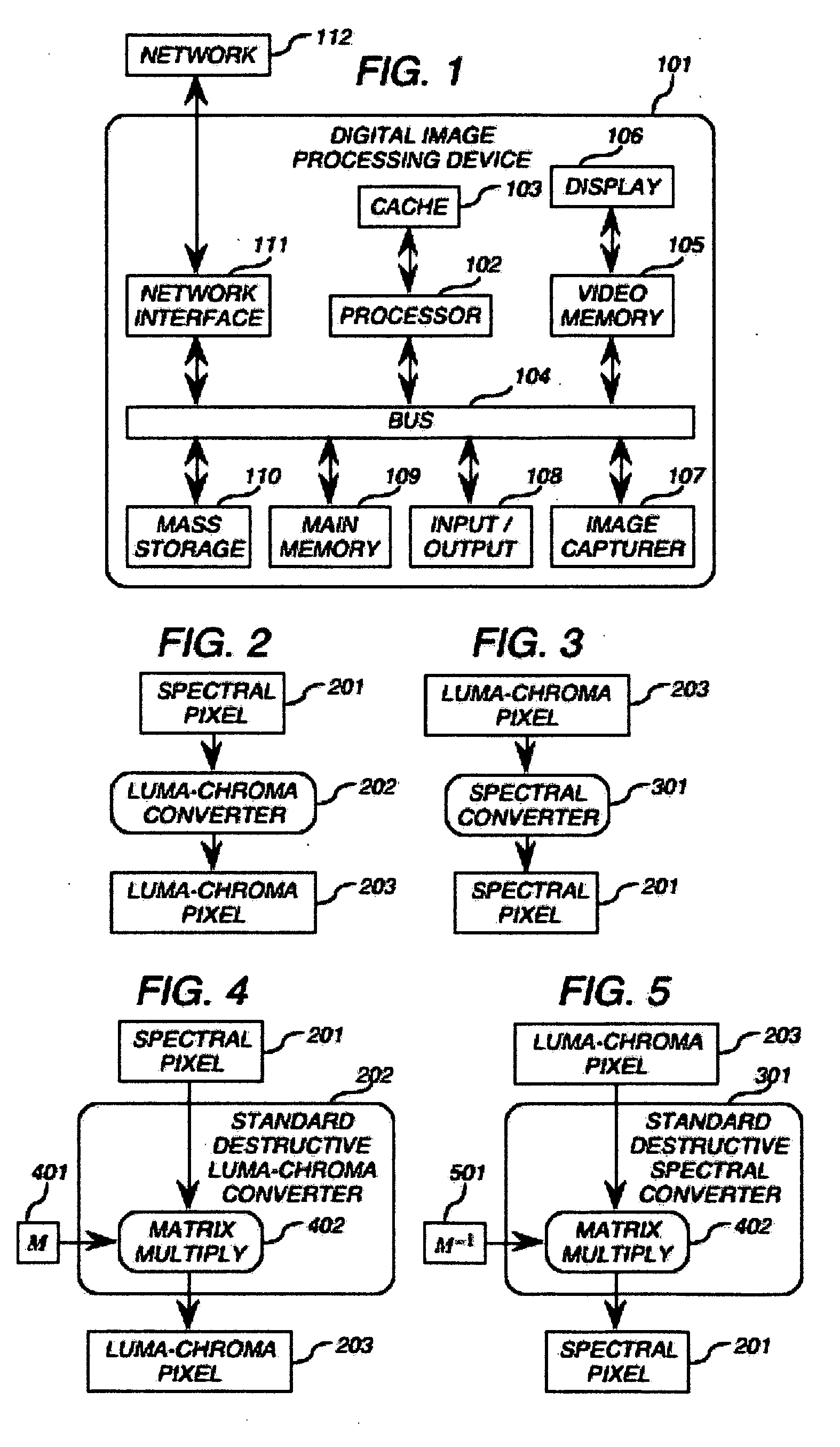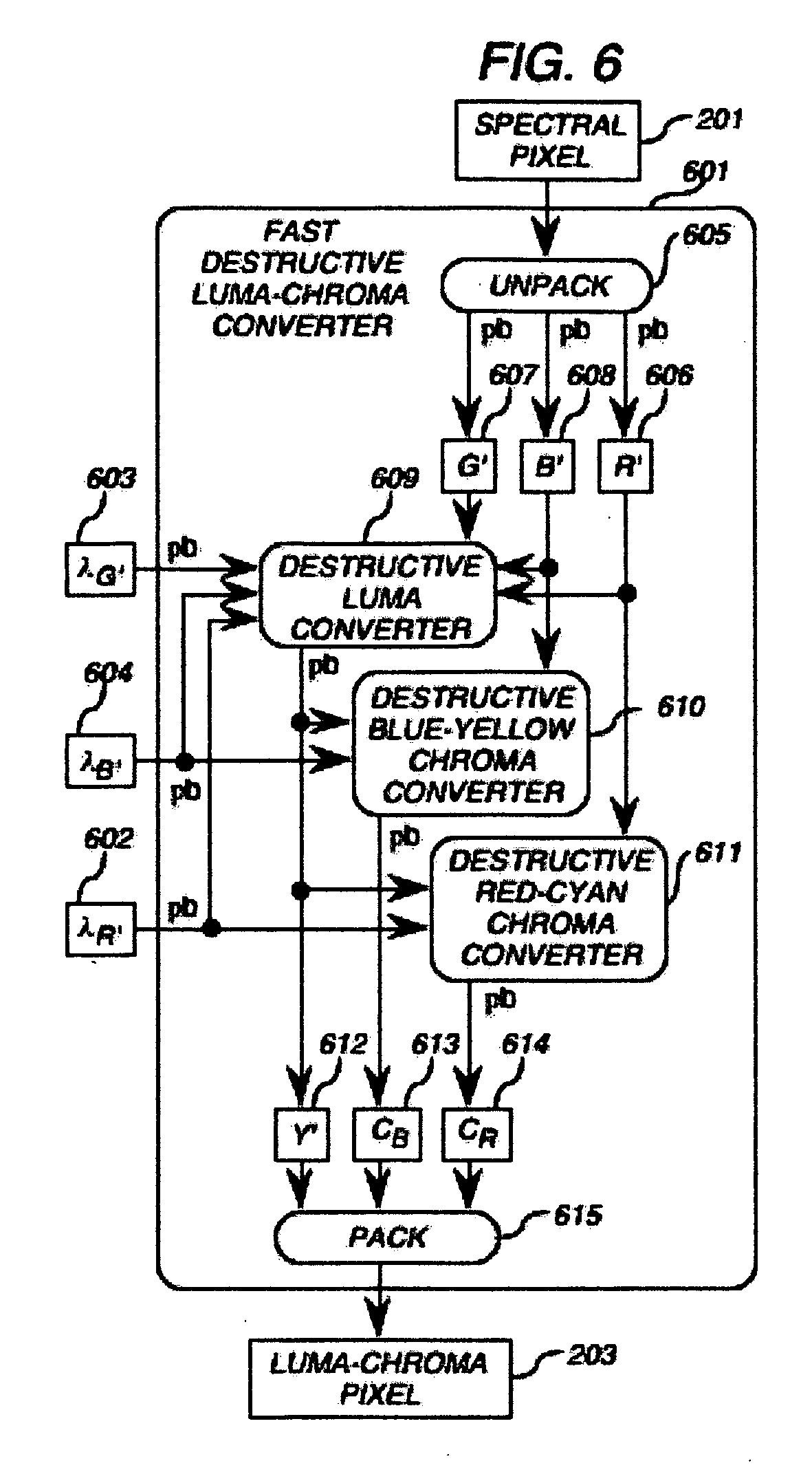Method and apparatus for lossless and minimal-loss color conversion
a color conversion and lossless technology, applied in the field of image and video processing, can solve the problems of lossy interconversion, further information loss and image degradation on each successive editing generation, and unsuitable dimensions for hardware and software implementation, so as to improve the quality of lossy image compressors, and ensure minimal errors
- Summary
- Abstract
- Description
- Claims
- Application Information
AI Technical Summary
Benefits of technology
Problems solved by technology
Method used
Image
Examples
Embodiment Construction
[0068] A method for color-space conversion of digital image data is described. In the following description, numerous specific details, such as number of dimensions, pixel components, bits per sample, etc., are set forth in order to provide a more thorough understanding of the present invention. It will be apparent to one skilled in the art, however, that the present invention may be practiced without these specific details. In other instances, well-known features have not been described in detail, so as not to unnecessarily obscure the present invention.
[0069] In the preferred embodiment of the present invention, source image material consists of large high-precision multichannel images. These images may, for example, be taken by digital video or still cameras, digitized from slides or prints by a scanner, taken by other imaging devices, or be synthesized or edited with the aid of a computer. The source images may have 2 or more spatial dimensions, and may be still or moving image...
PUM
 Login to View More
Login to View More Abstract
Description
Claims
Application Information
 Login to View More
Login to View More - R&D
- Intellectual Property
- Life Sciences
- Materials
- Tech Scout
- Unparalleled Data Quality
- Higher Quality Content
- 60% Fewer Hallucinations
Browse by: Latest US Patents, China's latest patents, Technical Efficacy Thesaurus, Application Domain, Technology Topic, Popular Technical Reports.
© 2025 PatSnap. All rights reserved.Legal|Privacy policy|Modern Slavery Act Transparency Statement|Sitemap|About US| Contact US: help@patsnap.com



